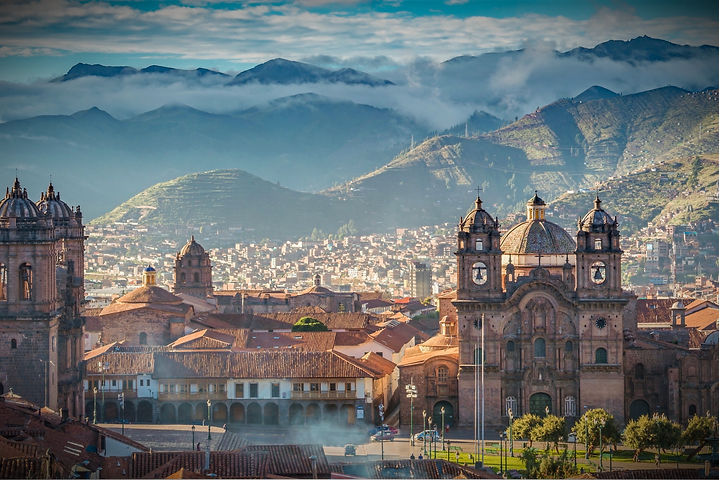Orientation
Highlights
"Altitude Issues"
Everyone in the group had arrived at our Lima Hotel for the night. The welcome dinner was over and the orientation meeting provided critical information and warnings concerning altitude and what we could do to prevent the onset of serious high altitude sickness. Highlights follow.
The flight to Cusco from Lima had to be in the morning due to increased
downdrafts and thunderstorms as the day progressed. Cusco was totally surrounded by the high peaks of the Andes and was considered the center of the Incan Empire and commonly referred to as the bellybutton of the world. However, it was still at 11,152 feet. Our flight in the morning would be taking us from Lima at sea level directly to Cusco at over 11,000 feet in about an hour and therein lie the problem.

An altitude of 11,000 feet in and of itself would not be a problem if you were gradually traveling overland to Cusco. The sudden change in altitude was the
issue and we would probably experience slight headaches, mild nausea,
general overall malaise, and tire quickly. However, the symptoms would gradually disappear over the next 3 days, while we explored the city and attended Inti Raymi, the festival of the Sun. The overall advice was - to take it easy and keep moving.
Oxygen would available in the lobbies of most hotels in Cusco. Our hotel in Cusco would have oxygen available in every room. They warned us to use it very sparingly and only if the symptoms were severe or we had trouble sleeping.
The main purpose of our three days in Cusco was to acclimate, in preparation for the hike. Any use of oxygen would only slow down the acclimatization process. It was imperative that we were acclimated at Cusco's elevation by the end of our 3 days there. "Dead Woman's Pass" was the high point at 14,000 ft on the Inca Trail and the summit could only be reached after a strenuous full-day hike uphill. Any onset of high altitude sickness at this point would require turning around and returning to a much lower altitude, thereby forfeiting this portion of the trip.
They advised us to drink the coca tea, instead of hitting on the oxygen. It would be available in all cafes and restaurants throughout Cusco. The tea, made by steeping the coca leaf would accelerate the process of acclimatization. We would be chewing the leaf while hiking.



Coca Leaves
The Incas considered the leaf sacred and it played an important role during the Incan period. It was considered gold not only for its medicinal properties but for the role it played in sacred rituals. It has been chewed for ages to prevent altitude sickness. You place a handful in your mouth and chew until mushy then move it between your cheek and gums. Despite being known as the source of cocaine it is neither addictive nor toxic in the leaf form and you will never get high from it. It's considered a miraculous and very effective medicine. The leaves are a mild stimulant and also suppress hunger, thirst, pain, and fatigue.
When in Peru. Do as the Peruvians do
Chew the leaf and drink the tea - and we did - A lot of it!
Porters of the Inca Trail

Returning to this hotel, after our 17-day trip was in the plan and we were requested to leave behind any non-essential items, including dirty clothes, as it would lighten the load that our porters would have to carry on the trek.
Corruption and mistreatment of porters along the Inca Trail to Machu Picchu are well documented. Wilderness travel hires twice as many porters as most other trekking outfitters for a group of 15 hikers, Thereby, reducing the weight that must be carried for 5 days along the Inca trail to Machu Pichhu by almost half. Our group had 32 porters to support our group of 15. These men and boys carried everything, tents, food, water, tables, and chairs including each hiker's baggage and cooked our meals, which were very good by the way, then delivered us hot water in bowls to our tents in the morning to wash up. Every morning, after breakfast, the hikers would hit the trail to the next camp with only a day pack and camera. The porters took down all the tents, repacked everything, and would pass us on the trail in the early afternoon, sometimes running. They would have the next camp set up before we arrived. Snacks and cold drinks waiting. They were always trying to help with something around the camp and they always had a smile. They amazed every one of us.
For an excellent documentary of their work as well as beautiful scenery along the trail click HERE
- - - We will never forget them. - - -
The Orientation meeting ended and we all returned to our rooms.
- - -Tomorrow morning we fly to Cusco- - -